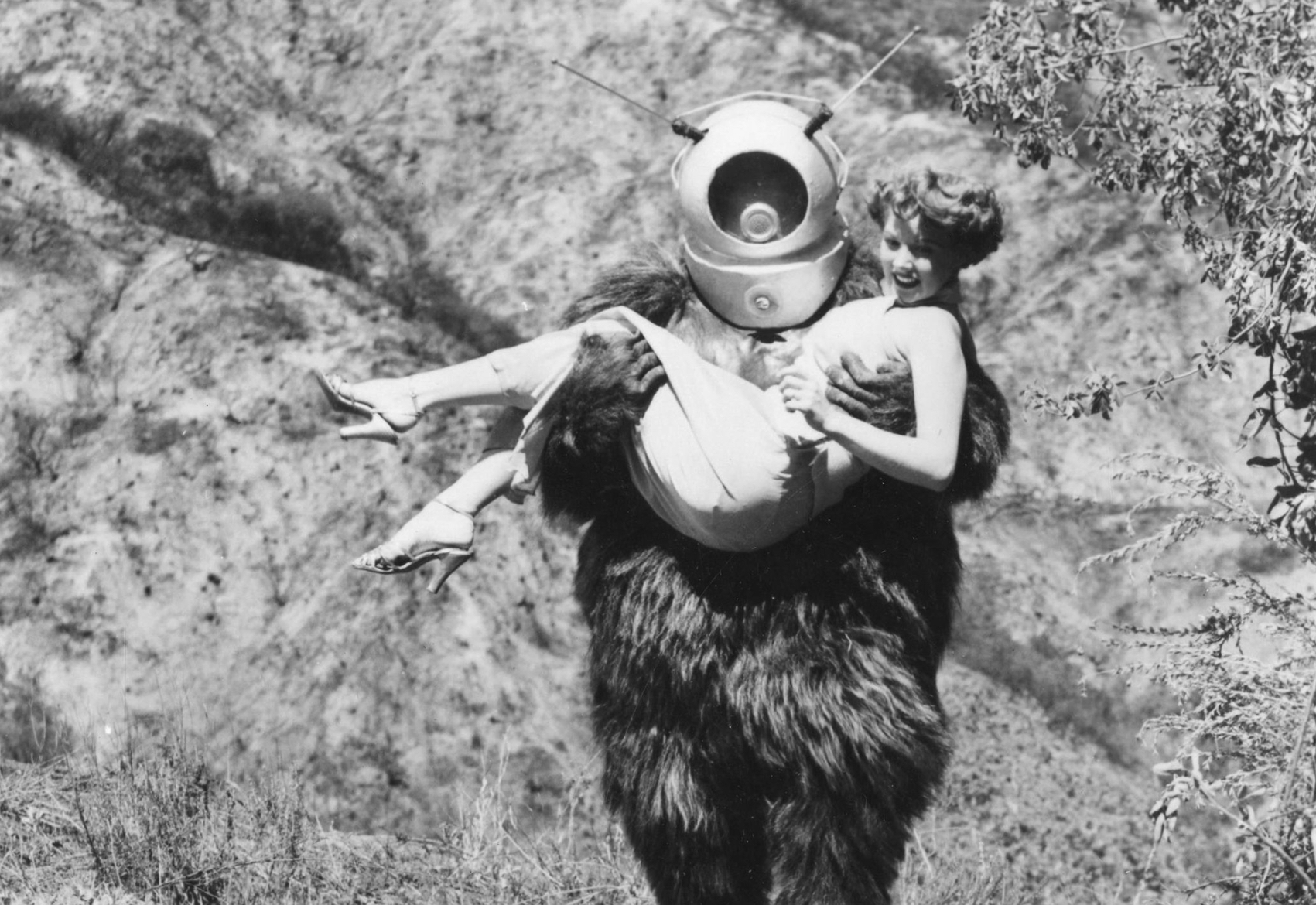When it comes to depicting aliens on-screen, we’ve come a long way from little green men with bulbous heads and jet-black tea-saucer eyeballs. Cinematic aliens have assumed every shape and size, from the gorilla-suit-and-diving-bell monster creature in Robot Monster to the blue-skinned felines of Avatar to the million species of the Star Wars universe. Giving alien characters such varied and foreign characteristics preserves their key trait — the feeling of unfamiliarity. The latest make and model of alien, courtesy of Denis Villeneuve’s science fiction drama / low-key philosophical treatise Arrival, resembles something between gigantic squids and seven-fingered hands. But even though fictional extraterrestrials have been as varied as planets in the universe, our stories about them tend to freight them all with the same significance.
When aliens visit Earth, their movies consistently define them by their differences from humans. Alien characters are consistently used to provide points of comparison for Homo sapiens, exposing truths about our behavior and culture by contrast. We have to step outside ourselves to get the clearest view. And Arrival, with its weighty meditations on humanity’s instinct for conflict and potential for cooperation, couldn’t be a more crystalline reflection of our cultural moment.

Robot Monster (1953)
Image Entertainment
Space travel and first contact were some of the earliest impossible dreams realized through cinema. Proto-kino wizard Georges Méliès is still best-known for his 1902 short A Trip to the Moon, which ships a group of explorers to a distant planet peopled by insect-faced cretins who burst into smoke when attacked. It’s a straightforward yarn of derring-do common for the period, but there was a visible touch of the era’s colonialism in the portrayal of the aliens, and how the heroes interact with them. The chattering barbarians get cut down by the advanced culture of the conquerors; the short is a few hokey-looking costumes away from a historical tableau. Méliès suffused his film with the expansionist spirit of Western Europe, playacting the carbon-based life-form’s burden.
Aliens help us channel anxieties through allegories
Alien narratives became fertile seeding ground for social allegories in the decades that followed. National anxieties over the Space Race and the Red Scare in 1950s America converged into simple parables about suspicion and tolerance, like Invasion of the Body Snatchers, The Day the Earth Stood Still, and various Twilight Zone episodes. The advent of computers, video games, and other rapidly changing technologies in the ‘70s and ‘80s precipitated alien encounters both friendly (Star Wars envisioned a universe teeming with possibility) and hostile (Alien pitted humans against a faceless, wraithlike, hyper-evolved enemy). Paranoia returned to the genre around the turn of the millennium. The aliens since then have been more diffuse, from the friendly comic outsiders of Treasure Planet and Lilo & Stitch to the religious-metaphor monsters in Signs to the neighborhood-uniting glow-critters in Attack the Block. They all help us define ourselves, whether by providing a unifying threat or by showing how we can cuddle up and make friends, or even family, in spite of our external differences.